Fighting the Format: UW Monument

I’m Dylan, the newest member of Team Troll Traders, and I’m here to share with you all my thoughts on Magic! I’m a Welsh player living in Cardiff, and a regular grinder on the UK Southern PPTQ scene. As a primarily Standard and Limited player, my focus will be on those formats – today, we’re looking at Standard.
In ‘Fighting the Format‘, I plan on laying down the strategies of the best decks in the format moving into a given weekend – what they are, how they work, how they win, and – importantly – how to beat them.
This past weekend, the Hour of Devastation fell upon us.
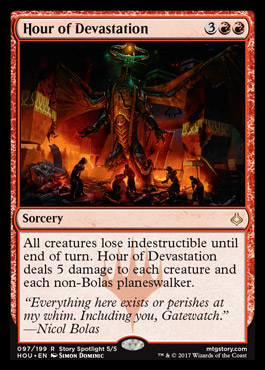
As with all new set releases, the SCG tour held their release weekend open Standard tournament. These tournaments are often a decent barometer for what to expect on the following weekend and, further, moving into the Pro Tour. While the existing and established archetypes like BG Energy, Temur Energy, Mardu Vehicles and UR Control all made a showing, the diversity amongst the top decks was staggering! With role-players like Four-Colour Emerge powered out by the new Champion of Wits and a return to form for Mono-Red Aggro with their Earthshaker Khenra, there is no clear ‘best deck’ moving into the weekend – just a bunch of solid choices, and that’s a great sign of a healthy standard environment.
That said, if I were playing a competitive standard event this coming weekend, I’d take the following:
The Deck
UW Monument – Jonathan Rosum, 2nd Place at SCG Open July 15th-16th 2017
Creatures (24)
4 Bygone Bishop
4 Cloudblazer
4 Hanweir Militia Captain
4 Selfless Spirit
4 Spell Queller
4 Thraben Inspector
Lands (25)
4 Island
9 Plains
1 Irrigated Farmland
4 Port Town
4 Prairie Stream
3 Westvale Abbey
Spells (11)
2 Stasis Snare
2 Metallic Rebuke
4 Oketra’s Monument
3 Dusk
Sideboard
3 Angel of Sanctions
2 Nimble Obstructionist
2 Stasis Snare
3 Negate
3 Gideon, Ally of Zendikar
2 Fragmentize
As an avid fan of UWx tempo shells, starting with the infamous UW Flash during Eldritch Moon standard that resulted in a Reflector Mage ban, and most recently in variants aimed at beating Aetherworks Marvel, I’m in for any list featuring the one-two punch of Selfless Spirit into Spell Queller.
How Does it Work?
So what does this list do? It makes its creatures cheaper to cast, plays these already cheap creatures at a discount, and then on top of that gets free creatures when it does so. And what do you have to thank for all this sweet, sweet value?
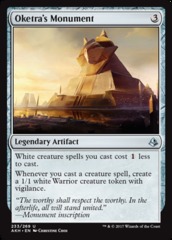
The Monument does exactly what this deck wants to do. Go wide, go wider, and then go a little wider again. With Monument in play, it is entirely possible an empty board can turn into six or more creatures in a single turn, and often while gaining incremental value along the way. Whenever you cast a turn three Monument and you get to untap, your opponent is likely to be in trouble.
The Monument isn’t the only thing that provides value, either – the creature suite covers all the bases. Where value is concerned, it has Thraben Inspector and Bygone Bishop ensuring that you have plenty of clues to gas back up whenever you have spare mana. This is the perfect Bishop shell particularly; it’s not uncommon you can cast a Bishop and 2 or more creatures in the same turn. While we’re on the value front, does anyone remember this card?
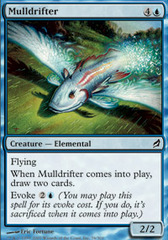
Cloudblazer does a pretty good impression here. Between ensuring you’ve got always got extra cards in hand, providing a reasonable body, and a handy 2 life to boot, the Blazer is on the fringe of constructed playability at five mana. At four mana? Sold.
To stop your opponent threatening your creatures or even your Monument, the deck has both Selfless Spirit and Spell Queller. As mentioned above, these cards are great in the deck individually. Spirit prevents all wraths bar Hour of Devastation and some other fringe options ruining your day, and Queller nabs any pesky four CMC or less spell before it has any impact. Even if they deal with Queller, the tempo hit gained by essentially time walking your opponent in the early game is huge, and with Spirit around, that’s easier said than done.
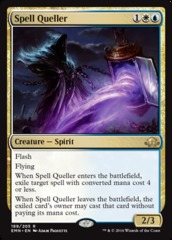
So the menagerie has shown that it can draw a ton of cards, go extremely wide and even counter opposing spells. There’s only one thing left on the checklist to have a totally rounded selection – going big. Enter Hanweir Militia Captain. The Captain has seen some occasional play out of the Mono-White and RW Humans decks as a serviceable two drop with a relevant creature type, but it’s never really had a place to shine. For it to be great, it needs to be able to threaten transformation early and often. In a deck that regularly plays four creatures each turn, this is not a tall order, and once you have the Westvale Cult Leader in play, your opponent has to worry about both a wide board and a potentially very, very tall board.
The spell selection pulls heavy duty here too – with both clues and the Monument representing artifacts that sit in play and never need to tap, Metallic Rebuke essentially acts as an even cheaper Mana Leak, a card that is believed to be too powerful for Standard. Stasis Snare also plays at instant speed, and has the upside of exiling. Scrapheap Scrounger and the gods are not a problem for this deck, and as so many lists play powerful artifacts and players gravitate towards Abrade and Dissenter’s Deliverance over Natural State, enchantments have never been safer. Between Rebuke, Snare, and Queller, the deck can even play a semi-instant speed game, punishing the Ux Control shells for holding up their mana and summarily getting a Glimmer of Genius or even a game-winning wrath countered.
Finally, we come to Dusk // Dawn. As removal spells go, this one really does some work. When your opponents’ creatures are small, your creatures will match up but you’ll have more of them. When your opponents creatures are big, it Plague Winds’ them and allows you to press your advantage. Then, after all the work it’s done or even after getting cast for no value when necessary, Dawn pops out of the graveyard and draws you a million cards. As all your creatures have power 2 or less on their front face, it’s very much the gift that keeps on giving.

As this is an allied colour deck, it’s mana base does not have access to the Kaladesh fast-lands, and must instead settle for the Shadow and Battle-lands. Nonetheless, playing only two colours and with a low curve, the mana is smooth and efficient. Importantly, it also allows for a few colourless utility lands. I can think of one that’s shown up occasionally in Standard and quite likes having a lot of creatures in play, and so did Jonathan:

As if this deck didn’t attack from enough angles, it also threatens a 9/7 Haste, Flying, Indestructible and Lifelinking creature at almost any point from turn six onwards. While activating the Abbey to create a 1/1 won’t come up often given the other ways that mana can be spent with clues, Dawn etc., it does happen, and getting five or more creatures in play to transform it is trivial. Aside from just being a great threat, Ormendahl tag teams with Selfless Spirit as wrath protection. If your opponent casts a wrath, even the Hour of Devastation, into six untapped mana, five creatures and an Abbey, they’ll swiftly have a demon to contend with (and potentially some profanity of their own)!
The sideboard offers some great options as well. Fragmentize excels in the mirror match, taking out both the Monument and any Stasis Snares your opponents may have left in, but also does good work against a number of other decks in the field, destroying Heart of Kiran, Hedron Archive, Dynavolt Tower and more. The extra Snares come in whenever there are creatures that need be sent to exile and Dusk // Dawn isn’t helping, and the Negates against Ux Control and other big noncreature spells. Gideon, Ally of Zendikar has been a mainstay in Standard since his release, and while Bolas and his Hours may have relegated him to the sideboard, you can’t keep a good Gideon down. In any matchup where you need resilient threats (again, such as Ux Control), or in matchups where the anthem he provides will help, in he comes.
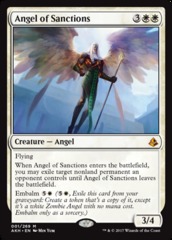
Angel of Sanctions and Nimble Obstructionist are the new players in the board. With the downswing of Archangel Avacyn and Heart of Kiran in the format, a 3/4 Flier is a better body than it used to be, and having an Oblivion Ring effect is extremely valuable in dealing with problematic permanents e.g. Planeswalkers. While Angel matches up poorly against Glorybringer, it gets a second chance at life for the low cost of six mana, taming the dragon easily. Obstructionist keeps the various triggered and activated abilities in the format honest, and is a 3/1 Flash Flier itself when there’s nothing to counter. The first time you counter a Haunted Dead activation with this will bring on a smile, I can tell you that!
What is it’s Plan?
UW Monument has three plans – aggro them out, grind them out, or Abbey them out. While UW can comfortably opt for a longer game plan, it’s also comprised of primarily one-three drop creatures, and Inspector into Selfless into Queller is just as effective as it ever was. Versus the control decks when you are very much the beatdown in the matchup, UW acts like a traditional tempo deck with a bit more card draw.
Unlike many prior interations of the UW tempo archetype, however, Monument can grind with the best of them. Previously, UW would spend the first few turns building a small force of creatures, then land the killing blow with a Gideon, Avacyn, or both. There wasn’t a lot of room for ways to generate card advantage – the focus was on killing your opponent before they ever got comfortable, and sneaking a win via an Avacyn flip when they did. In Monument, between Inspector, Bishop, Dawn and the titular card itself, there are a lot of incremental advantages built into the strategy – extra creatures, extra cards, and extra mana. If your opponent is planning on outresourcing you, they’re in for a hard time!
Lastly, when all else fails, there is the Westvale plan. If your opponent has stabilised in the early game and destroyed your forms of advantage generation, then you move to plan C – make a giant demon and hit them with it. If that doesn’t work, make another one.
What Are its Strengths and Weaknesses?
The fact this strategy attacks from numerous angles makes it very difficult to combat, but there are ways of doing so. Firstly, recognise its strengths:
- Board Presence.
- UW is quick. A low curve and a curve made even lower with Monument means it will cast its cards quickly, and replace them just as fast – it can fill and refill the board every turn if uninterrupted.
- Air Power.
- UW has a lot of fliers, but also bricks the ground extremely well with Inspectors, Warriors, and Captains.
- Card Advantage.
- Many of the cards in UW replace themselves, so running them out of cards can be difficult.
And it’s weaknesses:
- Synergy-driven
- UW’s cards are generally underpowered individually – a Captain by itself is a bear, a Monument with no creatures is a brick, and a Metallic Rebuke is a poor man’s Cancel.
- Weak to Wraths
- As much as UW has numerous ways to draw cards, and wrath insurance in Spirit and Abbey, it’s still very much a creature deck. What don’t creatures like to see? Wraths.
- Minimal Removal
- While Dusk is a powerful spell and Snare is a solid catch-all answer, Dusk is sorcery speed and restrictive, while Snare is both inefficient and vulnerable to enchantment and nonland permanent removal.
So, if you want to beat UW, you need to minimise their strengths and exploit their weaknesses as much as possible:
Play
- Resilient threats e.g. Heart of Kiran and Ishkanah, Grafwidow. With such little removal, resilient threats like Vehicles and Planeswalkers backed up by removal can bury UW before they get a chance to assemble their engine.
- Wraths, particularly those that get around Indestructibility e.g. Hour of Devastation, Yahenni’s Expertise. If they can never stick their creatures, UW will be unable to power an Abbey, and buy you plenty of time to setup your own plans.
- Fliers, particularly Avacyn. If you can get in the air, their biggest flying creature is a 2/3 – Glorybringer and Avacyn are both excellent at pushing through a stalled board, and Avacyn is also able to counter a Dusk and wrath them.
- Artifact removal e.g. Abrade, Dissenter’s Deliverance. Abrade scores maximum points here for also getting shot of Queller, Bishop and Monument. If you can interrupt their flow of cards and free mana, UWs weaker cards should have trouble standing up against the various powerful options available to you.
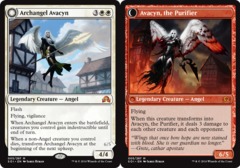
Do Not Play
- Too much spot removal. They can produce way more creatures than you can destroy!
- Big ground creatures. These can be fine when combined with some other elements on the above list, but just casting big guys will not get through an army of 1/1s and Dusk sweeping you.
- Card advantage that does not affect the board. You can likely keep up with their card draw if you choose to, but their extra cards have power and toughness – if you want to be casting Glimmer of Genius and Pull from Tomorrow, make sure you’re packing wraths to go with them.
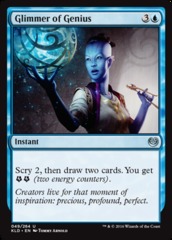
Whether you choose to sleeve up some Spell Quellers or you’re ready to attack Standard from a whole new angle, be aware of UW Monument – the deck has some real power.
If you have any questions or comments, please leave them below. Good luck!





